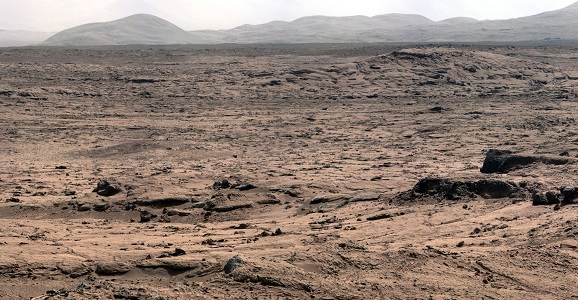Martian Soil Is Full Of Water. Seriously.
This article is more than 2 years old
 Future colonists and tourists on Mars probably don’t need to worry about bringing their swimsuits and inflatable floats, but a series of recently published NASA papers offer evidence that not only did the Red Planet have water on it in the past, but it’s currently harboring tons of it. This is one of the more amazing things I’ve ever been able say to more than one person at a time. This isn’t like, “Hey dude, I just got pulled over for speeding but the cop let me off with a warning.” This is, “Hey guys, we are now pretty certain that there is enough water on Mars to make human habitation there a lot more tangible.” Complications exist, of course, but we’ll get to that.
Future colonists and tourists on Mars probably don’t need to worry about bringing their swimsuits and inflatable floats, but a series of recently published NASA papers offer evidence that not only did the Red Planet have water on it in the past, but it’s currently harboring tons of it. This is one of the more amazing things I’ve ever been able say to more than one person at a time. This isn’t like, “Hey dude, I just got pulled over for speeding but the cop let me off with a warning.” This is, “Hey guys, we are now pretty certain that there is enough water on Mars to make human habitation there a lot more tangible.” Complications exist, of course, but we’ll get to that.
The papers encompass much of what the Curiosity team has learned from the rover’s first hundred days on Mars. The study’s lead author Laurie Leshin, of the Rensselaer Polytechnic Institute of New York, and her colleagues were looking over the results of soil analysis from samples retrieved back in November 2012. The rover used SAM, the Sample Analysis at Mars instrument, to crank up the heat to 1,535 degrees Fahrenheit and identify all of the gases that boiled away. Lots of carbon dioxide, oxygen, and sulfur compounds.
And water. An estimated 2% by weight. If we’re being generous, that means a cubic foot of Mars’ soil could yield approximately one liter of water. 33 glorious ounces of liquid sustenance.
“For me, that was a big ‘wow’ moment,” Leshin said in an interview with SPACE.com. “I was really happy when we saw that there’s easily accessible water here in the dirt beneath your feet. And it’s probably true anywhere you go on Mars.” Another paper published in Science showed that hydrogen could be found in the globally distributed fine-grained soil that Curiosity has passed along the way, which suggests that there could be water in the dirt all across the planet. Amazing. This also means future manned missions won’t be so limited in their landing sites. Because the soil is rich in deuterium, like the thin air surrounding Mars, Leshin says it tells them, “the dirt is acting like a bit of a sponge and absorbing water from the atmosphere.”
And now the downside, though it’s a downside that we already knew about. Martian soil contains dangerous levels of perchlorate, so part of the goal now becomes figuring out a way to get the water out of the soil without any of the perchlorate tagging along. Human interference would definitely increase the amount, but they’re going to figure something out before the first people gets all the way up there, hopefully.
This information is a huge jump after the most recent news that Mars had a huge wet period. (Ed note: Simply must figure out a different way to say “huge wet period.”) There is of course always the chance that some part of this could be a mistake, but you can still expect to see Universal’s The Creature From the Red Lagoon hit theaters in 2042.












